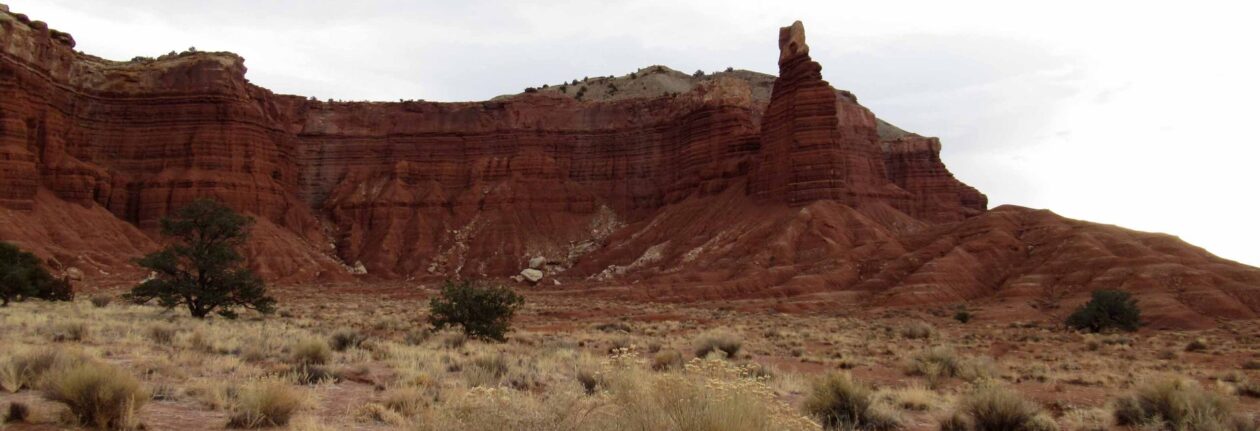Columbus, New Mexico
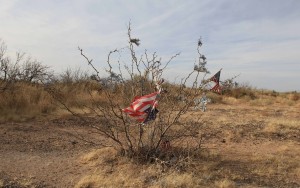
Driving through the sparsely to nil populated desert of the American Southwest, I can’t help but hear the theme to ‘Once Upon a Time in the West’ play in my mind. That melancholy tune playing as a death bell to what the west once was and what it’ll never be again; serving as a swan song to a number of ex-railroad towns, still standing ground, being battered by the wind and sand, but refusing to die. Past the Rockies, and throughout much of the west you’ll find these towns, from Orogrande to Lima; you’ll drive through highways plastered on where their main streets or railroads once passed; where nothing exists but old facades and hollow structures, lying still from lack of life. These ghostly towns serve as a reminder of an American dream that was or maybe never existed, but I believe that the old west best encapsulates this dream, though like many dreams in this desert land, it too died through lack of proper nourishment and love; it’s remains can still be found there in the desert; although if you come across it now, you’ll find it bone dry and bleached white by the sun.
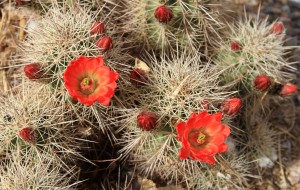
These thoughts dripped down through my mind as I was driving my car on New Mexico State Road 9, heading west; just as Horace Greeley advised, “Go west, young man,” so I did. I steered my car toward the setting sun to visit the town of Columbus, New Mexico – a city with an altitude of 4,068 feet and a population near 1,776; a city which defies the odds and survives seemingly for the sole purpose that we Americans never forget our history. Columbus was a town borne from the yolk of the railroad industry and despite the last sound of locomotives charging through here was in 1961 and that the railroad was torn up shortly thereafter, this town still lives, refusing to die of natural causes or even a seductive suicide.
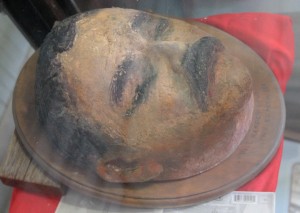
Columbus served as the setting for the last hostile invasion of the Continental United States by a foreign military; in this case, the revolutionary Villistas led by Pancho Villa himself. His motives behind the strike are still debated, although one theory suggests it was retaliation for Woodrow Wilson allowing the Mexican Army to enter the United States and use her railroad network to ship soldiers to northeast Mexico to defeat Villa and his revolutionaries; whatever the reasons may be, the Villistas hopped the border under cover of darkness on the early morning on March 9, 1916. Villa divided his forces, over five hundred strong, with the fighters in the north tasked with destroying the town and all of its inhabitants, whilst the southern fighters’ target was the local military camp (established just south of the railroad tracks), where the 13th Cavalry was stationed to try to prevent exactly what was occurring that morning.
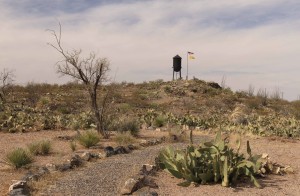
As the attack unfolded, the remaining troops in the camp – the majority of troops assigned to the camp were stationed along the border, away from town – managed to get to the armory, grab the machine guns, set up various strategic positions, and gun down the invaders. Soldiers rushed to protect the bank and the nearby Hoover hotel in effort to keep Villa and his men from advancing and burning down any more structures. Thanks to these machine guns and the heroic efforts of the soldiers, the 13th Cavalry successfully repelled the Villistas. In the end, eight soldiers were killed along with nine civilians (a tenth civilian died shortly afterward from injuries sustained that night). After the unsuccessful raid; General John J. “Black Jack” Pershing was sent to Columbus to lead the Punitive Expedition, a counter-invasion, ordered by Woodrow Wilson, into the sovereign nation of Mexico to pursue Villa and his cohorts. The Punitive Expedition brought thousands of troops into Columbus, which made it the most populous city in New Mexico by the end of 1916.
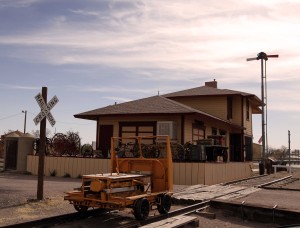
Just like the majority of visitors to Columbus, I came here to learn more about this extraordinary invasion and to see for myself the actual location and artifacts left over from that night. My first stop was the Columbus Historical Museum, which is in the old train depot at the junction of State Road 9 and 11. It was here, through various exhibits, displays, relics, and a documentary film, I gained additional knowledge of those historical events; however, the real gem of this museum is the president and curator, Richard dean, whose own great-grandfather, James T. Dean, can be counted among the dead on the night of March 9, 1916. I talked with Mr. Dean for about two hours; he recited the events from that night in accurate and stunning detail, mentioning little anecdotes like how even the cooks in the camp used what weapons they could muster up to help fight the Villistas – one used a pot of boiling water and another used the rifle he hunted quail with. He then showed me picture after picture displayed in the museum, identifying which historical characters were photographed as well as detailing the significant events associated with their lives. For instance, most everyone knows George S. Patton was there, but not every knows the rumor of how he got that post, which he desperately wanted: his sister and Pershing were an item. Also, he pointed out a short man in a couple of photos who was Pershing’s aide, James Collins, who had two sons: James Jr. and Michael, the latter famously piloted the Apollo 11 craft while Buzz Aldrin and Neil Armstrong walked on the moon.
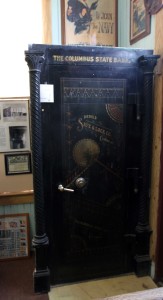
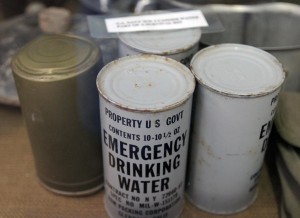
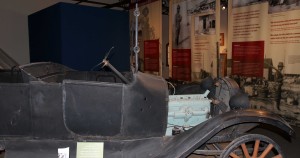
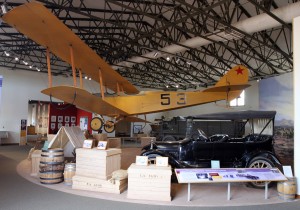
I could’ve listened to more Dean’s stories for hours on end, but it was getting late and I was still at my first stop in town; so I bade farewell and explored the outside of the depot, before crossing the street to the neighboring Pancho Villa State Park, where one can find Cootes Hill (the main lookout point used by the Cavalry to watch the border), two aged Army buildings made from adobe bricks, other remnants of the Army’s staging ground for Wilson’s counter-invasion, and many examples of Chihuahuan desert flora. Also, worth noting, a sign in the park commemorates the site of the United States’ first Air Base, which was located just south of where the Army’s camp – at that time named Camp Furlong – once stood; it was here the Army Air Corps’ 1st Aero Squadron utilized their biplanes in a foreign campaign for the first time. In addition, at the State Park’s museum, you’ll find an automobile shot up during the raid, a 1909 model Benet Mercié Machine Rifle just like the ones used by the Cavalry during the invasion, a motorized armored car, a replica 1916 biplane, and an assortment of other souvenirs from the Army’s expedition.
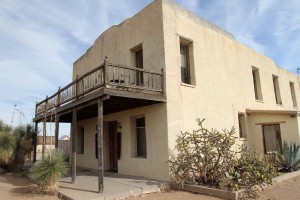
After visiting the park and museum, I wandered north to Columbus’ main street, walking the ground where the fiercest fighting took place, although on this afternoon the street was devoid of life and even all the parking spaces were empty. I couldn’t help but think that there must have been more activity here in 1915 then there was today. I then walked east to the still standing, yet remodeled, Hoover hotel, where many citizens took refuge during the morning battle. Finally, after seeing all I came here to see, I walked back to my car and headed east. As I was driving back home on a road where the majority of vehicles seem to all belong to the Border Patrol, I felt absolutely satisfied that I decided to travel on this expedition; an expedition which proved to be much more interesting and worth my while than I had imagined.
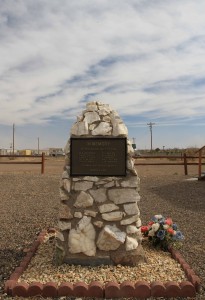
By 1912 the last territory in the American west had become a state and by 1917, with America entering the Great War, the curtain had come to a close on the ‘Old West’; in the years to come it would make appearances again in literature, radio, and film, its mythos preserved for future generations, but one can still observe the reality, first-hand, preserved in display cases and aging structures found in persevering communities like Columbus.
